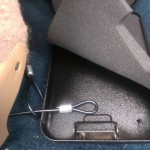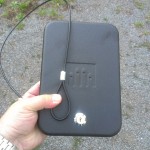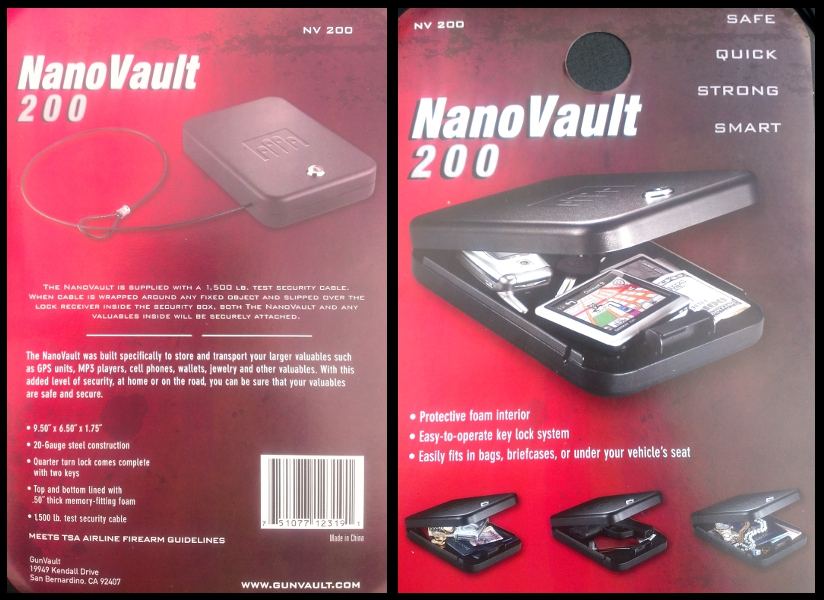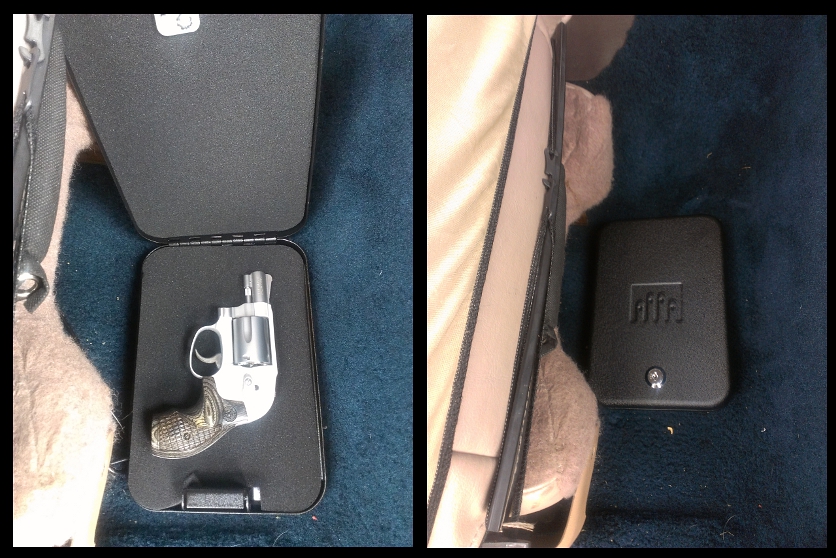Recently a friend of mine made the decision to carry concealed. After we embarked on a shopping trip to select a suitable carry pistol for him, he began to wonder if he would have to change his lifestyle somewhat. Among other things, he wondered if his regular trips to his local pub would have to stop, as he was wondering if (by law) he was not allowed to carry a gun in a bar in New York State.
It is obviously unwise to carry a loaded weapon while severely inebriated. But what if you’re okay to drive before and after your visit to the bar? You’re still carrying a gun you might not be allowed to have inside that facility. And what if you wish to go somewhere that has a posted no-firearms policy? Was my friend required to drive home and stow his gun before going out to such a venue, thus spending his evening without access to the firearm? That would defeat the whole purpose of carrying the gun, wouldn’t it?
There’s a simple and inexpensive solution. I told my friend to purchase a small car safe equipped with a steel cable. These are available from multiple companies in the $30-50 USD range (as of this writing). They consist of a clamshell of steel into which a steel cable is fitted beneath foam to cushion your firearm (or your wallet and phone, etc.). They can be had in multiple sizes, but I would recommend a larger model for greater versatility. The one pictured here is the NanoVault 200.
 The NanoVault ships with a pair of keys (I keep one on my keychain and another with my spare keys to the vehicle). Nothing else is needed or required, apart from the supplied steel cable. To use the vault, simply thread the cable around the metal strut of one of your car seats, through itself, and into the slot on the clamshell, where the metal collar prevents the cable from being removed (when the NanoVault is locked closed).
The NanoVault ships with a pair of keys (I keep one on my keychain and another with my spare keys to the vehicle). Nothing else is needed or required, apart from the supplied steel cable. To use the vault, simply thread the cable around the metal strut of one of your car seats, through itself, and into the slot on the clamshell, where the metal collar prevents the cable from being removed (when the NanoVault is locked closed).
Such a safe is for SHORT-TERM security only. You would not leave a gun locked in your car all the time using this method. A “professional” thief will make short work of such security measures. He will break your window with a steel punch and then cut the cable with his trusty bolt cutters, making off with your safe in order to pry it open at his leisure. Years ago my father used to keep an electronic safe bolted to the floor of his Suburban, which was about as secure as an in-car gun vault gets, but most people will be reluctant to start drilling holes in their cars’ floorboards. The NanoVault and safes like it are a good compromise for those times when you must temporarily secure your weapon in your vehicle. Once shoved under the seat, it is not visible to passers-by.
Going to duck into the Post Office, spend an hour in a bar, or stop into your local bank? Lock your gun in the NanoVault. It is much safer than it would be just under your seat or in your glove compartment, because a casual thief (one without the tools to cut steel cable) will be unable to grab it and go. The safe is also a great place to store your keys, pocketknife, and other metal items if you’re going to walk into a Federal Building or courthouse in which metal detectors guard the entrance.
Your car is your mobile property. When entering non-permissive environments, having a little safe like this, cheaply (and not permanently) installed in your vehicle, can be extremely helpful. You can also use this safe for rental cars and other borrowed transportation, as no alteration to the vehicle is required.
 Carrying a firearm requires more than knowledge of the gun itself. It requires a commitment to securing that firearm when and where this is legally required and morally appropriate. Installing a steel-cable vehicle safe in your car will make your life more convenient, yes — but it will also demonstrate that you have made a good-faith effort to prevent unauthorized users from accessing your firearm, even when you are not carrying it. In our litigious society, this is as important as having access to a gun when you need it.
Carrying a firearm requires more than knowledge of the gun itself. It requires a commitment to securing that firearm when and where this is legally required and morally appropriate. Installing a steel-cable vehicle safe in your car will make your life more convenient, yes — but it will also demonstrate that you have made a good-faith effort to prevent unauthorized users from accessing your firearm, even when you are not carrying it. In our litigious society, this is as important as having access to a gun when you need it.

